Without a shadow of a doubt, Des’ toy car and cowboy outfit were the cutest artefacts presented during the project.
It is lovely to see much loved childhood treasures being preserved for, and then shared with, other generations.
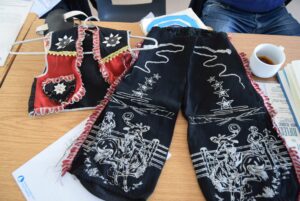
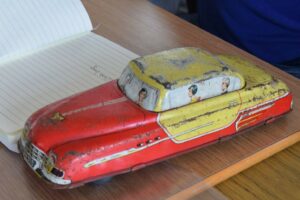
Archive – posts contributed to the Archive
Without a shadow of a doubt, Des’ toy car and cowboy outfit were the cutest artefacts presented during the project.
It is lovely to see much loved childhood treasures being preserved for, and then shared with, other generations.


2 Shillings, it’s a wedding thing
The British florin, or two shilling coin, was issued from 1849 until 1967, valued at one tenth of a pound (24 old pence), it was the last coin circulating immediately prior to decimalisation to be demonetised, in 1993, having for a quarter of a century circulated alongside the ten pence piece, identical in specifications and value.
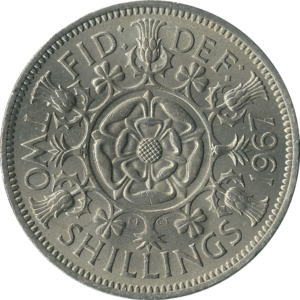
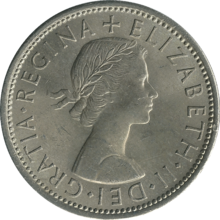
Bernadette shares her memories of her mum and Daly’s, the local shop.
Each of the Participants involved in the Project were invited to bring in an item to share with the group. It could be a photography, a historical item or a family heirloom.
Hughie brought in his Great Grandfather’s banjo to show the group.
Abi shares with us the story of her 109 year old Bible and how it was won for ‘Good answering’ by her Great Grandmother.
In this video Robert and John tell us about their Millennium Project to build a traditional Irish Donkey Cart and Turf Barrow, and although this was a massive undertaking, it was nowhere as difficult as the requirement to make 2 miniature scaled models of the same.
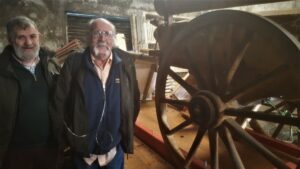
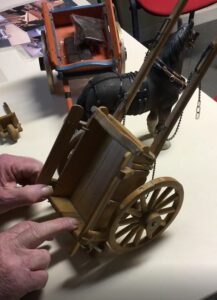
Under workshopsen I Place EE I Skellefteå så pratade vi om förändringen som skett inom teknologi och i vilket takt förändringen har skett. Några av seniorerna som deltog berättade om sina tidigare yrken och fritidsintressen, detta ledde till intressanta diskussioner kring hur saker och ting har förändrats över tid. Detta gav de yngre deltagarna en värdefull insyn i de förändringar som de äldre har varit med om och hur det kan påverka deras förmåga att lära sig ny teknik.
Som ett sätt att bryta isen tidigt i workshopsen bad vi seniorerna att se över sina hem och ta med objekt som de ansåg hade en kulturell betydelse eller något som har förändrats med ny teknik. Vi hade väldigt kul när vi försökte gissa vad objekten hade för användningsområde!
Cultural relics from Skellefteå
During the Place EE workshops in Skellefteå we talked about the pace of change to technology. Some of the older citizens in the group talked about their careers and hobbies and we had interesting discussions about how things had changed over the years. This gave the younger people a useful insight into the challenges older people can face when they begin to use new technology.
As a way to break the ice in the early workshops we asked our older citizens to look at home and bring in some objects that they thought had cultural significance or showed how technology had changed. We had a lot of fun trying to guess what some of the things were!
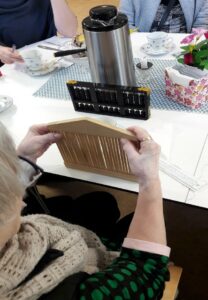
(Fig.1)

(Fig. 2)
Figur 1 och 2 visar olika typer av abakuser som användes tidigare innan miniräknare och datorer.
Figures 1 and 2 show different types of abacuses that were used before the widespread use of calculators and computers.
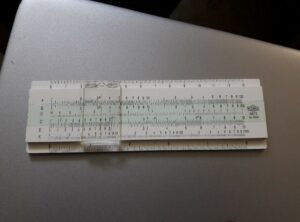
Fig. 3 Visar en räknesticka, en linjal som använder logaritmer för att utföra beräkningar.
Fig.3 Shows a sliding ruler. A device that uses logarithms to allow the user to perform calculations.
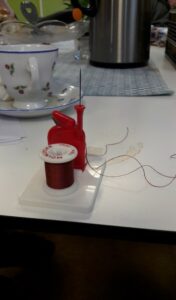
Fig 4. Ett verktyg för att trä på tråd på nål, används för hantverk och broderi.
Fig.4 A tool to thread a needle used in haberdashery and embroidery.
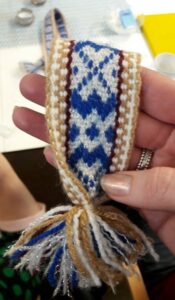
Fig 5. Ett broderat band i traditionell svensk design.
Fig.5 An embroidered ribbon in a traditional Swedish design.
A Badger’s Woes – a poem by Robert Corrigan
The Blackthorn bush is found throughout Ireland and the British Isles.
It has been prized for centuries as a material for premium walking sticks. The original Blackthorn sticks used to be 2 to 4-foot long Irish shillelaghs (the national weapon of rural Ireland). In expert hands the shillelagh was so fearsome that during the final occupation of Ireland, the English outlawed it.
To get around the law, the Irish turned the shillelagh into a 3-foot walking stick. The English didn’t want to appear unreasonable by outlawing walking sticks too, so the Irish kept their modified shillelaghs and the world gained a beautiful and functional walking stick known simple as the Blackthorn.
Here John explains his family tradition of passing the Blackthorn from Grandfather to Grandson, following the family name James.
Mary shares with the group her carved utensils, given to her as a gift from a family friend who served as a missionary with the Mill Hill Fathers.